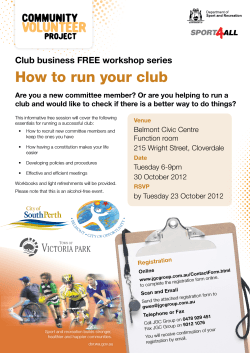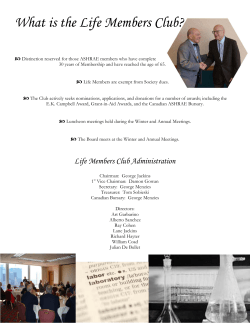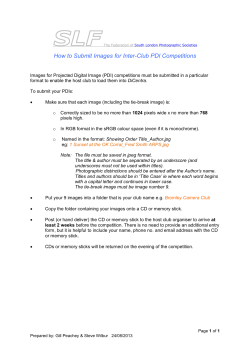
Residential housing project for former Escondido Country Club
Residential housing project for former Escondido Country Club Michael Schlesinger, Stuck in the Rough, LLC Beth Binger, BCI Chris Brown, Alchemy Consulting Group Jean Freelove, Freelove Consulting Group Bob Glaser, La Jolla Group Senator Dennis Hollingsworth, National Tax Limitation Committee Jason Roe, REVOLVIS Ali Shapouri, Shapouri & Associates History Escondido Country Club was founded in 1964 Historically zoned R-1-7 Residential for 600 homes Underlying zoning reaffirmed through 3 General Plan updates, the last in 2012 In bankruptcy three times, most recent 2012 Membership dropped from over 500 to 119 In 1971, a parcel within the Country Club property was rezoned from R1-7 to “PD.” The owner of the land, the Unger Company, wanted to develop that parcel and wrote the City Council asking for a repeal of the PD zoning. Then-City Attorney Ken Lounsberry said that the rezoning of the land was “improperly enacted” and advised the Council to repeal and advised that the land be put back its original R-1-7 zoning. ~ Notes of the Regular Meeting of the City Council, Wednesday, February 16, 1972 Golf Enthusiasm Down Nationally 157 golf courses closed in 2013 154 courses closed in 2012 Number of golfers dropped 19% since 2000 400,000 golfers quit from 2012 to 2013 Rounds of golf played lowest since 1995 Cottonwood, Montesora, Mt. Woodson, Salt Creek, Stone Ridge, and Warner Springs Ranch went into bankruptcy Stuck in the Rough Acquired from 2012 Bankruptcy Acquired in package with Stone Ridge C.C. Hired professional golf management firm Touchstone Golf Operating losses of $35,000 each month Required $2 million of infrastructure upgrades $130,000 in back property taxes $100,000 in unpaid water fees Continue to operate Stone Ridge, closed Escondido Country Club Community Engagement Mayor Sam Abed and Councilman Ed Gallo were enthusiastic about the project Reached out to community leaders ECCHO formed and launched ballot initiative to repurpose land as permanent open space Responding to political pressure City Council adopted rather than place on ballot Lawsuit Stuck in the Rough files lawsuit against Escondido for illegal taking of the property If successful, judgment would require City to pay value of “highest and best use” of property City’s General Fund is $75 million; judgment could be as high as $100 million Compromise that limits number of homes to 430 Designates 25% of property to open space (27 acres) Creates $1 million Open Space Preservation Fund Builds 10,000 square foot, 3.6 acre community center with Olympic pool, tennis courts, and state-ofthe-art playground Creates 2.2 miles of hiking trails Economic Impact on Escondido & Region $82 million in economic activity $18.7 million to the General Fund $639,000 in annual tax revenue 155 new full-time jobs over two years Increased property values for the adjacent homes, generating even more tax revenue Initiative Qualified for November 2014 Ballot More than 11,000 signatures submitted Certified by City Clerk City Council must place on ballot on July 23 Let Country Club Development Proceed It’s encouraging that a compromise may be in the works over the fate of the now-closed Escondido Country Club. Owner Michael Schlesinger has every right to develop the 111-acre site he bought in late 2012. He determined that continuing to operate the country club and golf course was no longer financially feasible, but after he shuttered the facility last April and floated plans to build homes on the site nearby residents had a fit. They launched a successful petition drive to have the property declared permanent open space, a measure the City Council foolishly adopted last August. Since then there’s been a flurry of litigation, including a suit by Schlesinger that maintains the open space designation amounts to an illegal “taking” of his property. Meanwhile, the golf course has deteriorated. Now residents say they’re open to a compromise in which they would drop their opposition to a new residential development as long as Schlesinger provides for open space and other amenities like trails and parkland — all elements of his original proposal, which proposed 50 percent open space. Hopefully, residents and Schlesinger will be able to hash something out so that the ban on building can be lifted. The longer the impasse persists, the greater the financial risk to taxpayers.
© Copyright 2025





















